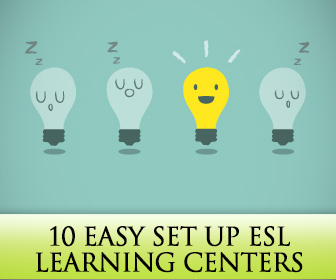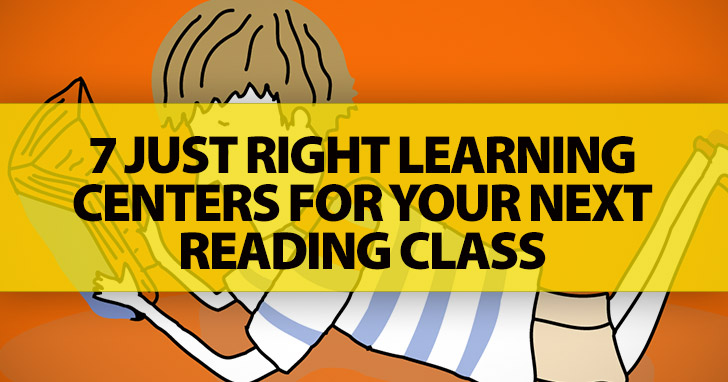10 Easy Set Up Learning Centers for ESL Classrooms


Reading centers are an easy way to make this happen. They can challenge students’ comprehension and communication skills and keep in class activities fresh. Try one or more of these or create your own learning centers for reading class.

Graphic organizers can be very helpful in getting students to understand what they have read. Choose your favorite story mountain organizer and leave several copies at your learning center. At your center, also include several short fictional pieces at your students’ reading level. If you teach younger students, picture books are great resources for easy to read fiction. Students who use the center should read the short fiction and then fill out the graphic organizer which breaks down the important parts of the story. This activity will increase their comprehension and retention of what they have read.
Have several magazines at reading level available for your students at this center. Students using the center should read a short article or part of a longer article. As they read, they should note five or more unfamiliar vocabulary words in the passage. On a separate piece of paper, students should write those five words. They should then use the context in the sentence and in the article to guess at their meaning and write a definition next to each word. Then, using an English-English dictionary that you have at the learning center, they should look up each of the words and write their actual definition beneath the inferred definition.
In this learning center, students work with a partner to read and explain an article. Choose one or more articles for your students to read at the center. Divide the article into two sections, and put each section in a separate file folder. Label both folders with the title of the article and either part one or part two. On the back of folder number one, write five comprehension questions that are based on part two of the article. On the back of folder number two, attach five comprehension questions that are based on part one of the article. Students who want to use the center should work with a partner. Each of the two students then reads a different part of the same article. Once both students have finished reading, they explain their section to their partner. The explanation should be completely oral. Students should not show their partner their portion of the article. However, listeners should feel free to ask any clarifying as needed. After hearing the explanation and on a separate piece of paper, each person should try and answer the comprehension questions based on what they heard. After both partners have answered the questions on their folders, they should check with their partner to see if their answers are correct.
Once you have explained to your students how to use a Venn diagram, you can include this learning center in your reading class. Make copies of several nonfiction articles on the same subject for students to read. You might want to store them in file folders so they are easy to locate. A student using the center chooses a folder and then selects two articles. After reading both articles, the student creates a Venn diagram on a separate piece of paper. The diagram should compare the information in each article – what information was in only one article and what information was in both articles. It should also include the titles of the articles. You may want to have students place their completed diagrams in an inbox or folder for your review.
This simple center requires nothing more than a few simple books and some sticky notes. Students using the center choose a book and read it. They should then write a book review on a sticky note for their fellow students to read. You can keep the reviews very simple: have students say whether they liked the book or not and why. Other reviews can be more complicated depending on the level of your students. Once students have written a review, they should place it inside the front cover of the book. Students who use the center later can read the reviews before choosing a book to read.
How well are your students understanding what they are reading? This learning center will test their ability to distinguish fact from opinion in a reading selection. Set up the center by collecting several magazine or newspaper articles that are at your students’ reading level. Also display a chart which explains the difference between fact and opinion. Students using the center should read an article and then make two lists – one list of the facts in the article, another list of the opinions expressed in the article. They should also include the title of the article that they read on their paper. Challenge your students to list several entries for both fact and opinion. Once their lists are complete, have students turn them in to you for review.
Being able to summarize what you have read is an important reading skill. This simple center requires nothing more than some at level reading materials for your students. After teaching them how to write a summary, you can encourage them to use this learning center during free learning periods. Students using the center should simply read a selection and then write a summary of it. Students should turn their summaries in for review.
What are your favorites?